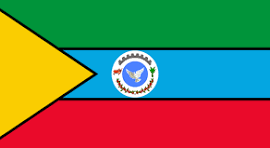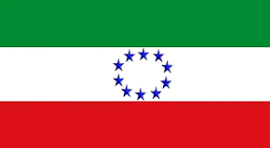Table of Contents
Spring Land Agreement Methodolgy
The different perimeters
| English | Amharic | Local langage (to be adapted) |
|---|---|---|
| Inner Perimeter | Ye Wust dinber | Gido Zawa |
| Outer Perimeter | Wushi Dinber | Gata Zawa |
| WaterShed | Tafasas | Pultuwa Zawua |

Perimeter radius above and on the side of the spring
| English | Rules | Exception (Upon specific justification) |
|---|---|---|
| Inner Perimeter | Minimum 5 m | 2 – 5 meters |
| Outer Perimeter | Minimum 50 m | 30 – 50 meters |
| WaterShed | The crest and ridge of the valley |
These are minimal numbers, use your good sense and logic to determine protection perimeter, for example:
- If natural or man-made boundary (Ridge, gullies, land border) are close to the optimal distance then use this as the perimeter boundary
- If there are risk area (ex: big erosion), a bit outside the minimal radius, these area must be included in the perimeter
What is allowed and forbidden in each perimeter
| Right and obligation | Inner Perimeter | Outer Perimeter | Watershed |
|---|---|---|---|
| Allowed | Grass | Perennial crop (grass, coffee, banana…) | All Cultivation Grazing of animal if attached Latrines |
| Forbidden | All tree All cultivation All animals Latrines | Annual Crop Chemical inputs Ploughing Latrines Cutting all tree Planting eucalyptus Animal entrance | Cutting indigenous tree Letting the land without protection |
Transfer types
Landholding transfer = Land is transferred to the association with a certificate made by the Woreda
Land use right transfer = there are strong bylaws endorsed by the Kebele and by the iddirs on strong change of rules for the land (ex: no more annual crop)
Simple Iddidr bylaws = Simple rules made by the iddirs and not endorse by the government (Ex: Tree cutting ban, obligation to protect the land)
Transfer rules
The transfer is made to the WUA which is the legal owner of the network. The WUAF sign on all documents as the operation, management and maintenance of the future network will be delegated by the WUA to the WUAF
| Cases | 0 – 5 WP | 6 – 10 WP | More than 10 WP | ||
|---|---|---|---|---|---|
| Best | Minimal | Best | Minimal | Minimal | |
| Inner Perimeter | Certificate | Strong Bylaws | Certificate | Certificate | Certificate |
| Outer Perimeter | Certificate | Strong Bylaws | Certificate | Strong Bylaws | Certificate |
| WaterShed | Iddir Bylaws | Iddir Bylaws | Iddir Bylaws | ||
Transfer discussion
Organise a meeting that is held at the spring site with:
- All land owners concerned by the planned perimeter (at least 50 m above and on the side of the spring)
- The village Iddirs
- The WUA, WUAF and the Water Agent
- The Kebele chairman or representative
- The Woreda scheme Administration expert
- The ARIA QS&CM expert
The start the discussion by explaining the roles of these perimeter, what is allowed and forbidden on each perimeter. Use local language as much as possible
Then peg your ideal inner and outer perimeter
Discuss with all stakeholders on the feasibility of such perimeter, change the peg position according to the community choices (as long as it fit with the above requirements)
Agree on the next step to be done:
- Negotiation with the owner, eventual compensation
- Landholding transfer (certificate)
- Redaction of iddir by laws
- Redaction of the land transfer document and signature
- Physical marking of the outer perimeter delineation (before the start for the construction) with local sign/plant (mato) for social enclosure
- Fence on the inner perimeter (after the construction is completed)
To go further Framework for land access and right of use
To go further
For more details on the legal framework see: Doc n° ST2-S11 “Framework for land access and right of use”
For the rational on the chosen Proceed Standards see: Doc n° ST2-S13 “Protection perimeter definition and rational”

